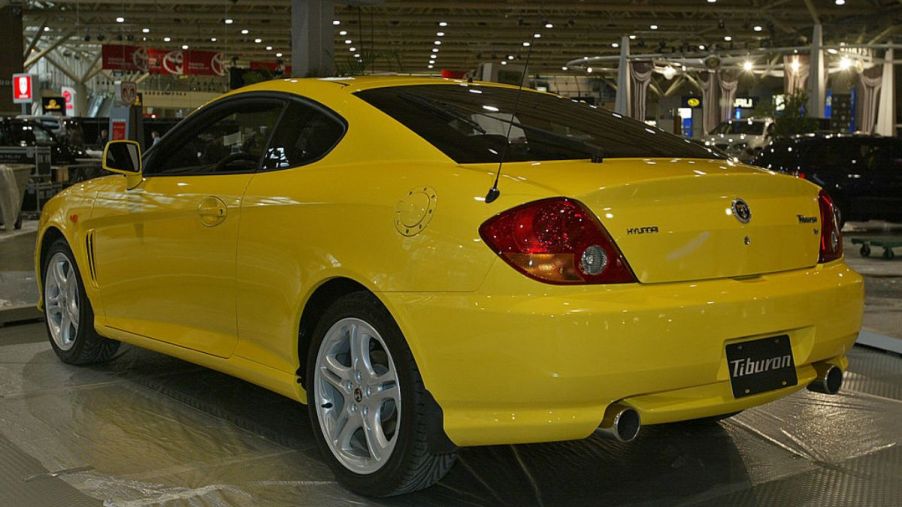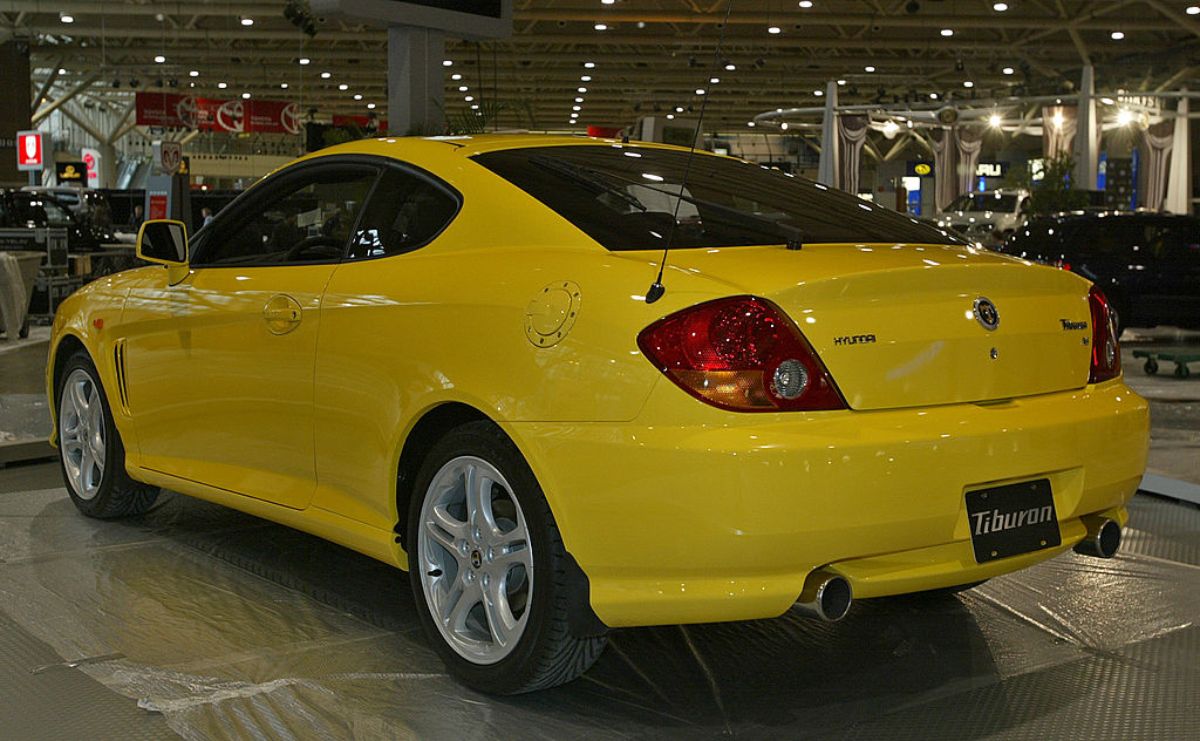
Avoid 1 Hyundai Tiburon Model Year if You Want a Good Used Car
Hyundai isn’t known for its line of sports cars, but in the late ’90s, it introduced the attractively styled Tiburon that stuck around for 11 years. As a four-seat coupe, the Tiburon competed with other import sports cars, like Toyota Celica and Mitsubishi Eclipse.
While Hyundai’s sporty coupe found some success toward the end of its production run, shoppers should avoid the early years and one model year in particular.

The Hyundai Tiburon
The first Hyundai Tiburon generation spanned from 1997 to 2002 as an attractive small sports coupe with “a coke-bottle design and distinct lines” rivaling the looks of any sports car of the era, according to Hot Cars.
But, unfortunately, this is one of those cases where you shouldn’t judge a book by its cover, as they say. While its two powertrain options, a 1.8-liter four-cylinder with 130 horsepower borrowed from the Hyundai Elantra and a 140-horsepower 2.0-liter, offered competitive numbers for its import-oriented class, the Tiburon’s interior provided little comfort or luxury.
For 2003, Hyundai redesigned the Tiburon, and although the base 1.8-liter engine remained underpowered, the newly added Tiburon GT trim included a 172-hp 2.7-liter V6. For comparison, a 2003 Honda S2000 had 240 horsepower, but its MSRP was about 30% higher. Along with the new GT engine, the second-generation Tiburon featured longer exterior lines, upgraded electronics, optional leather seats, and an improved interior overall.
2008 saw the last of the Tiburon, and Hyundai didn’t immediately name a successor. Instead, the Korean automaker opted to take a year off from sports car production to regroup. Two models, the rear-wheel drive Genesis Coupe and front-wheel drive option based on the 2007 Veloster concept, make up the Tiburon’s replacement options.
Although the Genesis Coupe was a big step up in MSRP from the Tiburon.
Which Hyundai Tiburon model year to avoid
Most of the Hyundai Tiburon’s model years receive few owner-reported issues at Car Complaints‘ website, but the redesigned 2003 Tiburon saw a spike over all others.
Most of the problems revolve around the car’s electrical system, with complaints including loose battery cables, malfunctioning cruise control, and dash lights illuminating when pressing the brake pedal.
However, Car Complaints lists the 2003 model year only as the third worst, with 2004 and 2006 Tiburons encountering failed clutches at under 45,000 miles taking the top two spots for the worst model year.
Is a Hyundai Tiburon a good used car?
If you’re looking for a sporty small coupe with an attractive style unlike every other inexpensive 2000s Asian sports car, then a Hyundai Tiburon is an excellent choice. However, it’s advisable to pick a model from the second generation to get the livelier GT powertrain and better parts availability since Tiburon production ended long ago.
Based on owner complaints, a 2007 Hyundai Tiburon lands in the sweet spot of the fewest issues, late model second generation, and affordable pricing.
The second-generation manual transmission-equipped Tiburons with under 125,000 miles on the odometer should sell for under $2,000. Automatic transmission models could fetch up to $4,000. However, the joy of a small sports car comes from its go-kart-like driving characteristics, and a manual transmission provides more fun.



